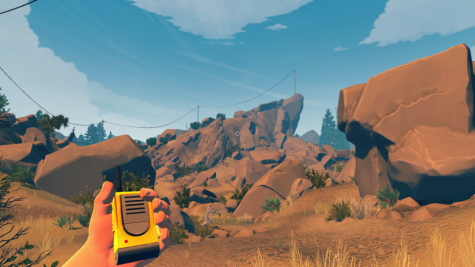Video Games Don’t Cause Shootings, But That Doesn’t Give Them a Free Pass
April 25, 2018

Since the Feb. 14 Stoneman Douglas High School Shooting in Parkland, Florida, video games have returned to a position of scrutiny in regards to their impact on real-world violence. This is interesting because the matter has largely been settled for years. In 2011, the landmark Brown v. Entertainment Merchants Association case ruled that video games are protected speech, acknowledging that research is unable to link violent video games with a public health crisis. Video games are art, and any discussion of violence in this medium must be approached from a cultural perspective, not a hamfisted legal one.
Because there’s still a great deal of discussion to be had, just not scaremongering about computer games corrupting our children. From an artistic standpoint, it’s difficult to deny that popular video games are overwhelmingly fraught with senseless violence; see PlayerUnknown’s Battlegrounds, Call of Duty: WWII, and Battlefield 1, all from just the past couple of years. Part of this is that violence is very popular to begin with. After all, Hollywood blockbusters have a similar problem. Another part of this is that popular games skew more towards ludology (prioritizing play over narrative). Violence lends itself to genuinely interesting and engaging combat mechanics. These games are a good way to pass the time and are clearly intended to serve as fields of competition rather than works of art, but the fact they are the ones that enter the public sphere and get millions of dollars in funding is backward.
I’ve been using lots of terms like “popular” and “public sphere” because these do not encompass the whole story. Independently produced, or “indie,” games represent most of the interesting work being done in games. Many of them directly critique games and gaming culture, such as The Stanley Parable and Undertale. These works are worthwhile but are mostly only meaningful to those already submerged in that culture. More interesting are the games that escape this self-inspecting sphere and look at more relatable themes. One example is Night in the Woods, which is about returning to your dead-end hometown and trying to reconnect with estranged friends. Another is Firewatch, a game that deeply explores its two lead characters and unfurls into a complex narrative about surveillance and the fallibility of conspiracy theories. Incidentally, neither of those games feature recurring combat mechanics.

The good news is that, slowly but surely, games like this are gaining more funding and the large teams they deserve to be fully realized. 2012 saw the release of Spec Ops: The Line, an unflinching critique of American imperialism that’s much bolder than other examples of the genre’s mere gestures at the idea. The game was released by 2K Games, a large publisher, and I’m frankly astonished that the developers were able to get such a bold project made. More recently, Hellblade: Senua’s Sacrifice provided a vivid image of what it’s like to live with psychosis, and supports this with its mechanics; tight camera angles during fights make you worry about opponents behind you, and puzzles revolve around meaningless patterns in the environment. Both of these titles use violence to further their narratives, rather than falling back on mere combat.
These are just a few examples. There are an astronomical number of indie games, and mid-budget titles are starting to rise to prominence. Video games have a staggering amount of potential, and if more consumers acknowledged and supported this they would be less stigmatized. Pulpy action titles will always have a place, but we can do so much better than just that.


